Stock market today: S&P 500 climbs as health care, tech gain; Nvidia earnings loom
Introduction & Market Context
Corvus Pharmaceuticals (NASDAQ:CRVS) presented its first quarter 2025 business update on May 8, highlighting promising clinical data for its lead drug candidate soquelitinib in atopic dermatitis. The presentation comes as the company’s stock has experienced significant volatility, trading between $1.75 and $10.00 over the past year, with a recent closing price of $3.98.
The company’s shares surged 53.43% in aftermarket trading following its Q1 earnings release, despite a slight EPS miss of -$0.13 versus the forecasted -$0.12. This strong market reaction appears primarily driven by the encouraging clinical trial results detailed in the presentation rather than financial performance.
Soquelitinib Phase 1 Trial Results
The centerpiece of Corvus’s presentation was data from its Phase 1 clinical trial of soquelitinib, a selective ITK inhibitor, in patients with moderate to severe atopic dermatitis. The randomized, placebo-controlled study enrolled 64 patients across four cohorts with different dosing regimens.
The trial design included rigorous inclusion criteria, requiring patients to have moderate to severe disease (EASI ≥16, BSA ≥10, vIGA ≥3) and inadequate response to at least one topical or systemic therapy.
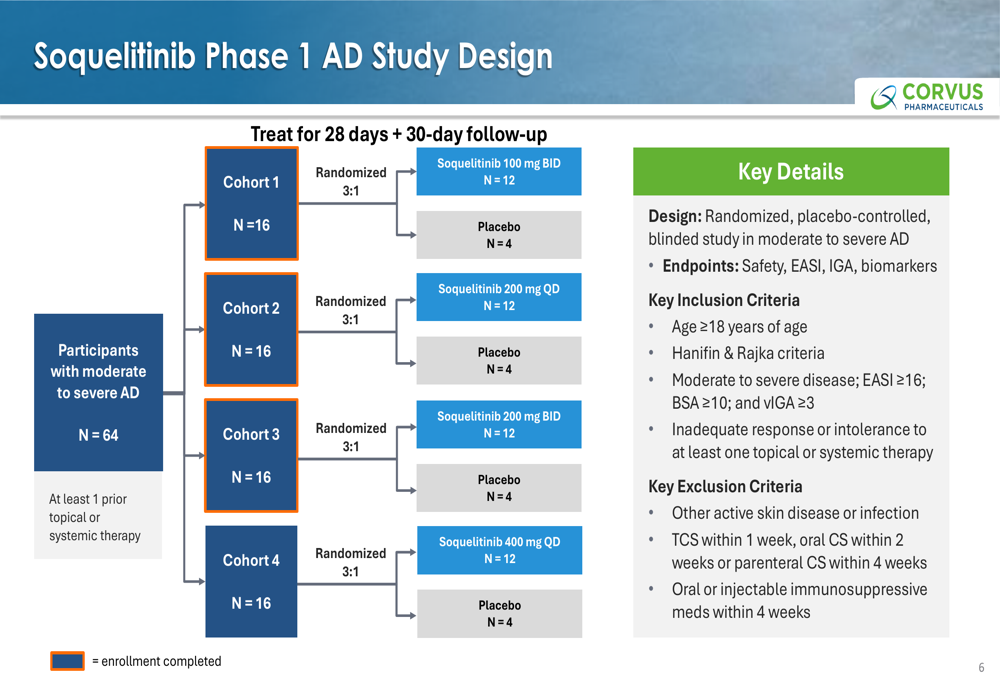
Efficacy results at the 4-week mark showed significant improvements across all soquelitinib cohorts compared to placebo. Notably, Cohort 3 (200 mg BID) demonstrated the strongest results, with a mean EASI reduction of 71.1% versus 42.1% for placebo. This cohort also achieved an impressive 63% EASI 75 response rate (indicating a 75% improvement in disease severity), while no placebo patients reached this threshold.

The data showed clear separation from placebo across all treatment cohorts, with statistical significance (p=0.03) at day 28. Importantly, the benefits appeared to persist even after treatment discontinuation, suggesting a durable effect.
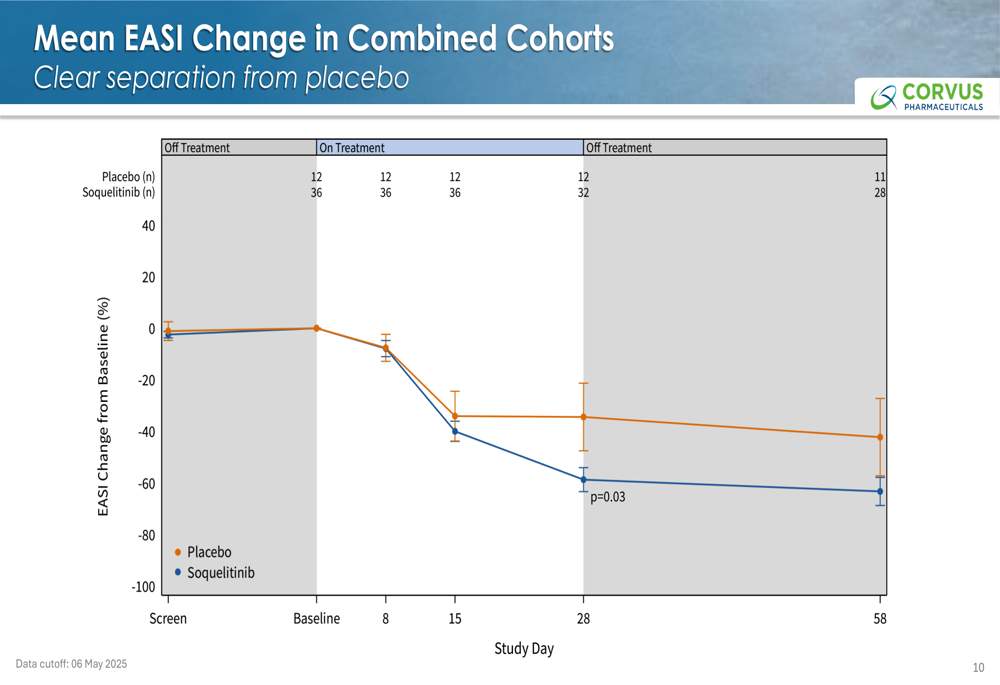
When examining the key endpoints of EASI 75 and IGA 0/1 (clear or almost clear skin), the 200 mg BID dose consistently delivered the strongest results. This dose-dependent response provides valuable information for future trial design and potential commercialization strategies.
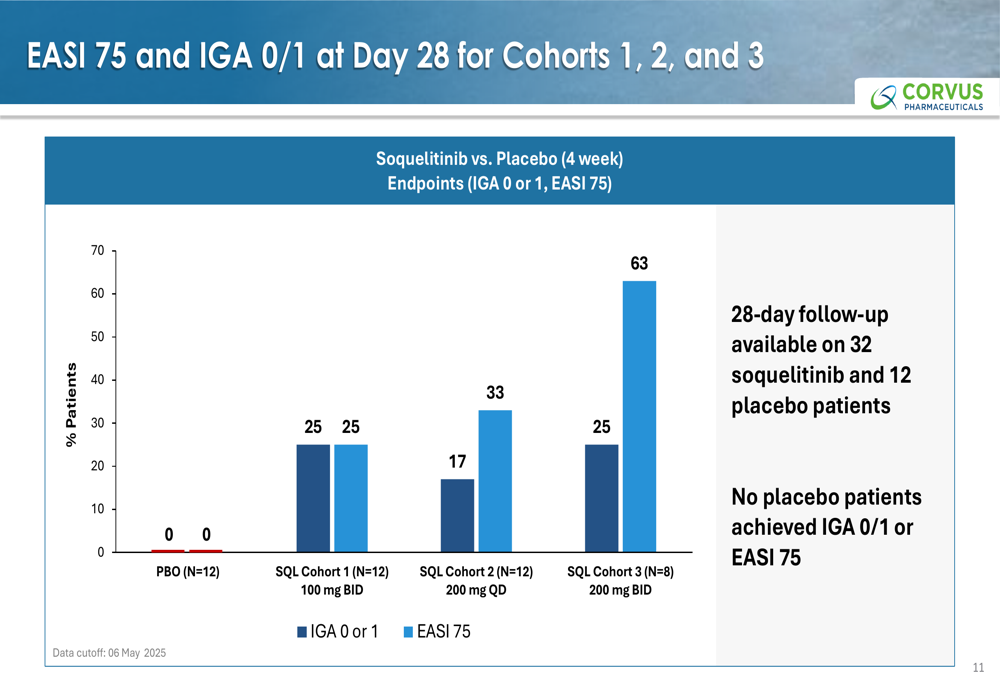
Safety Profile
Soquelitinib demonstrated a favorable safety profile across all cohorts, with no severe adverse events, serious adverse events, or discontinuations due to adverse events reported. The incidence of treatment-related adverse events was minimal, with only one patient (2.8%) in the soquelitinib group reporting nausea (Grade 1).
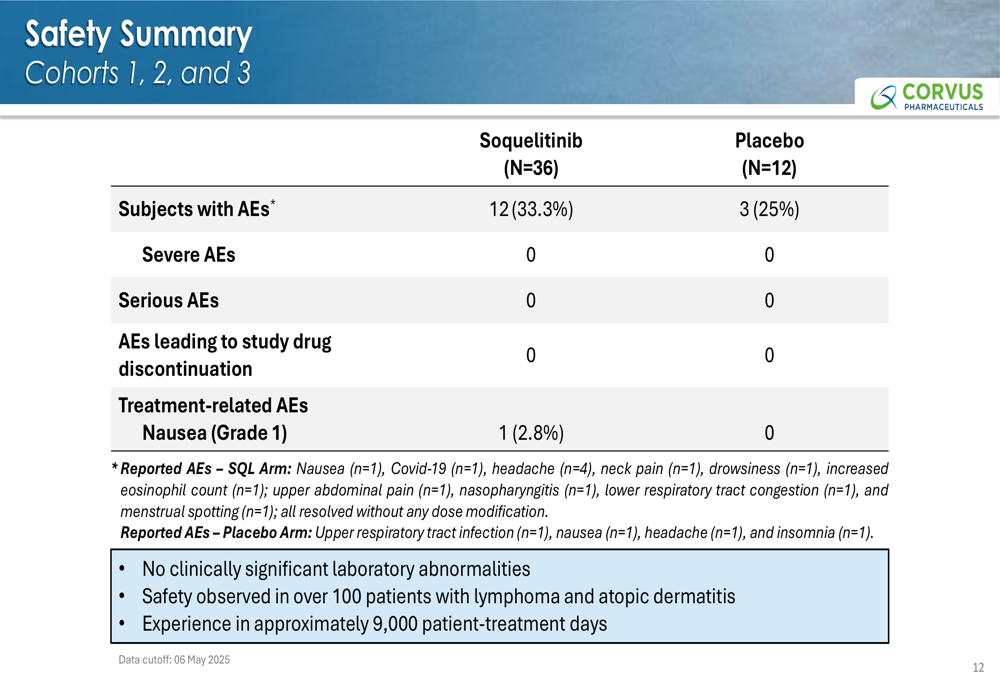
The company emphasized that this safety profile is consistent with previous experience in over 100 patients with lymphoma and atopic dermatitis, representing approximately 9,000 patient-treatment days. This robust safety database strengthens the drug’s potential as a competitive option in the atopic dermatitis market.
Strategic Initiatives
Based on the promising results from the first three cohorts, Corvus announced a protocol amendment that replaces the planned fourth cohort (400 mg QD) with an extension cohort. This strategic shift aims to optimize plans for Phase 2 development by:
1. Extending treatment duration to 56 days (from 28 days)
2. Focusing on the most effective dose (200 mg BID)
3. Randomizing 24 patients in a 1:1 ratio
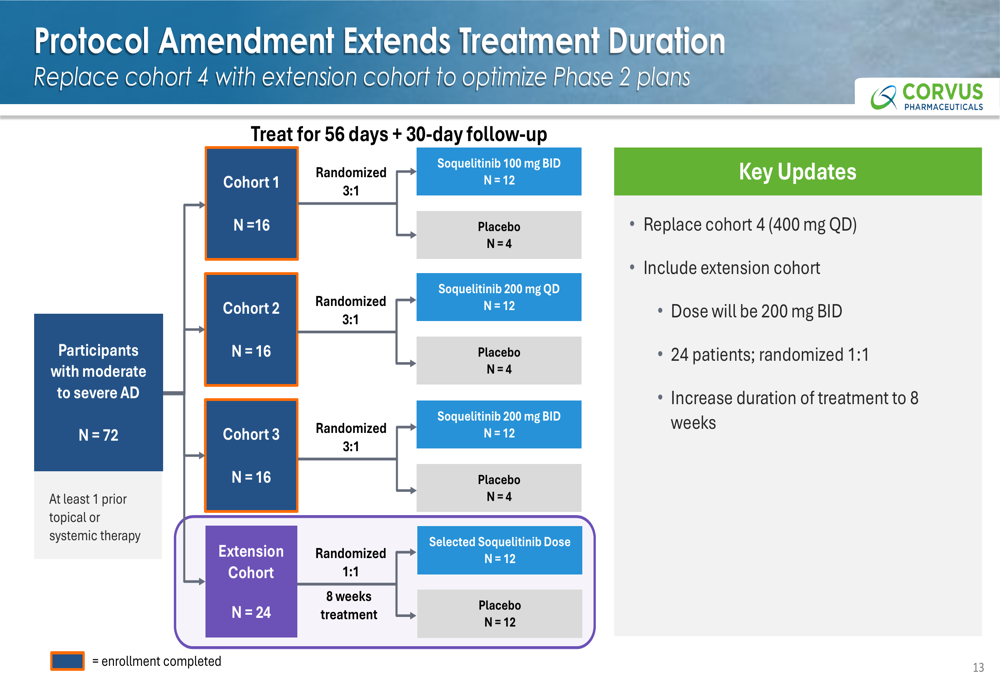
The company highlighted several key advantages of soquelitinib, including its oral administration, favorable safety profile, durable response, and novel mechanism of action. Management believes selective inhibition of ITK represents a potentially groundbreaking approach for treating autoimmune and inflammatory diseases beyond atopic dermatitis.

Quarterly Performance Highlights
While the presentation focused primarily on clinical data, Corvus’s financial position has strengthened considerably. According to the earnings report, the company posted a net income of $15.2 million for Q1 2025, a dramatic improvement from a $5.7 million loss in Q1 2024. This turnaround was largely driven by a recent warrant exercise that extended the company’s cash runway into Q4 2026.
R&D expenses increased to $7.5 million from $4.1 million in the same quarter last year, reflecting the company’s investment in advancing its pipeline. Despite this higher spending, the extended cash runway provides Corvus with sufficient resources to complete the current trials and potentially initiate Phase 2 studies without immediate financing concerns.
Forward-Looking Statements
CEO Richard Miller expressed optimism about soquelitinib’s potential, stating in the earnings call: "We view the data as very encouraging with all treatment cohorts demonstrating a favorable safety and efficacy profile compared to placebo." He further emphasized the broader applications of the drug, noting that "the safety mechanism of action and other properties suggest that soquelitinib could be an important new treatment for a broad range of immune diseases."
The company plans to complete data collection for Cohort 3 within one to two months and intends to initiate a Phase 2 trial for soquelitinib in atopic dermatitis before the end of 2025. Additionally, Corvus is exploring potential expansion into solid tumors and other immune diseases, leveraging the drug’s unique mechanism of action.
While the clinical data and market reaction appear promising, investors should note that the company continues to face challenges, including ongoing losses, competitive pressures in the atopic dermatitis market, and dependence on successful trial outcomes for future growth. Nevertheless, the strong Phase 1 results provide a solid foundation for Corvus’s development strategy moving forward.
Full presentation:
This article was generated with the support of AI and reviewed by an editor. For more information see our T&C.
